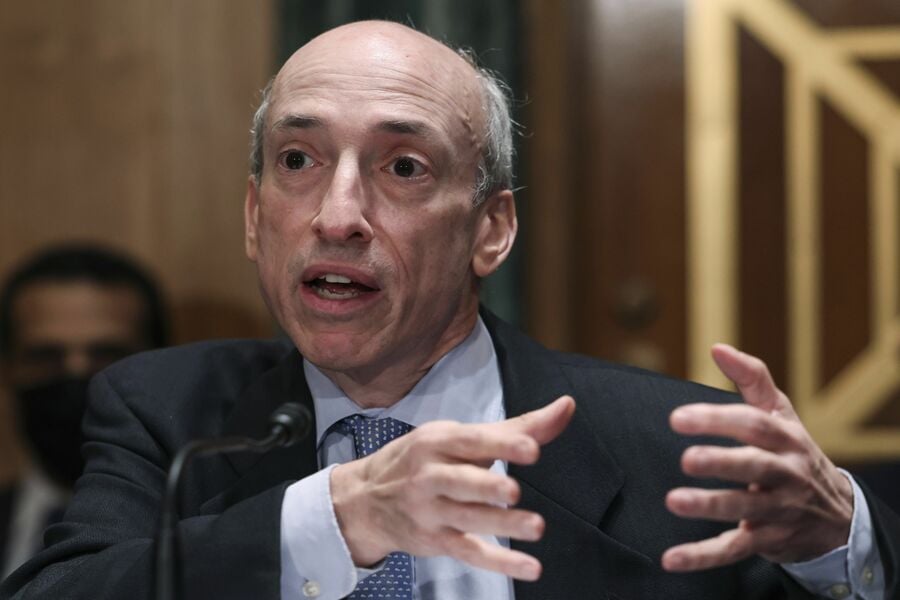

The Securities and Exchange Commission is ratcheting up its scrutiny of investment firms using leveraged and inverse exchange-traded funds to hedge against market volatility.
The products “can pose risks even to sophisticated investors, and can potentially create systemwide risks by operating in unanticipated ways when markets experience volatility or stress conditions,” Chairman Gary Gensler said Wednesday in remarks at an industry event.
Retail investors and private funds alike have flocked to these derivatives-powered products this year amid market turmoil to bet on declines and to hedge against various stocks. While these ETFs can be a useful trading tool during market downturns, their structure means they can also deliver swift losses.
The trades have been at the center of market meltdowns over the years, and regulators have previously cautioned investors about using them in the wake of the 2008 financial crisis.
Following events such as the collapse of Archegos Capital Management, Gensler said his agency needs to take a closer look at derivatives products.
“In the past few months alone, with our regulatory and law enforcement partners, we have brought charges for historic events involving funds and derivatives,” Gensler said. “There may be more to come, unfortunately.”
[More: The complexity of ETF options]

The looming threat of federal funding cuts to state and local governments has lawmakers weighing a levy that was phased out in 1981.

The fintech firms' new tools and integrations address pain points in overseeing investment lineups, account monitoring, and more.

Canadian stocks are on a roll in 2025 as the country prepares to name a new Prime Minister.

Carson is expanding one of its relationships in Florida while Lido Advisors adds an $870 million practice in Silicon Valley.

The approval of the pay proposal, which handsomely compensates its CEO and president, bolsters claims that big payouts are a must in the war to retain leadership.
RIAs face rising regulatory pressure in 2025. Forward-looking firms are responding with embedded technology, not more paperwork.
As inheritances are set to reshape client portfolios and next-gen heirs demand digital-first experiences, firms are retooling their wealth tech stacks and succession models in real time.
